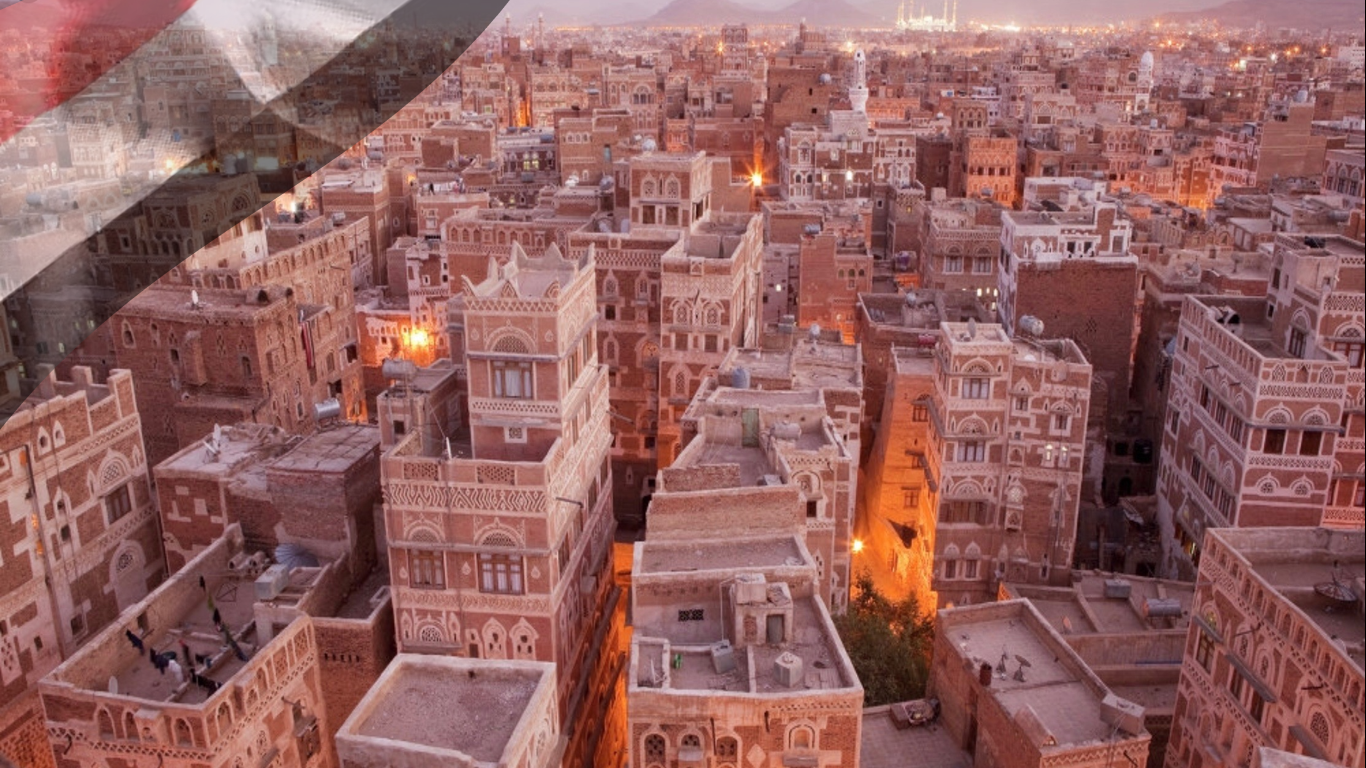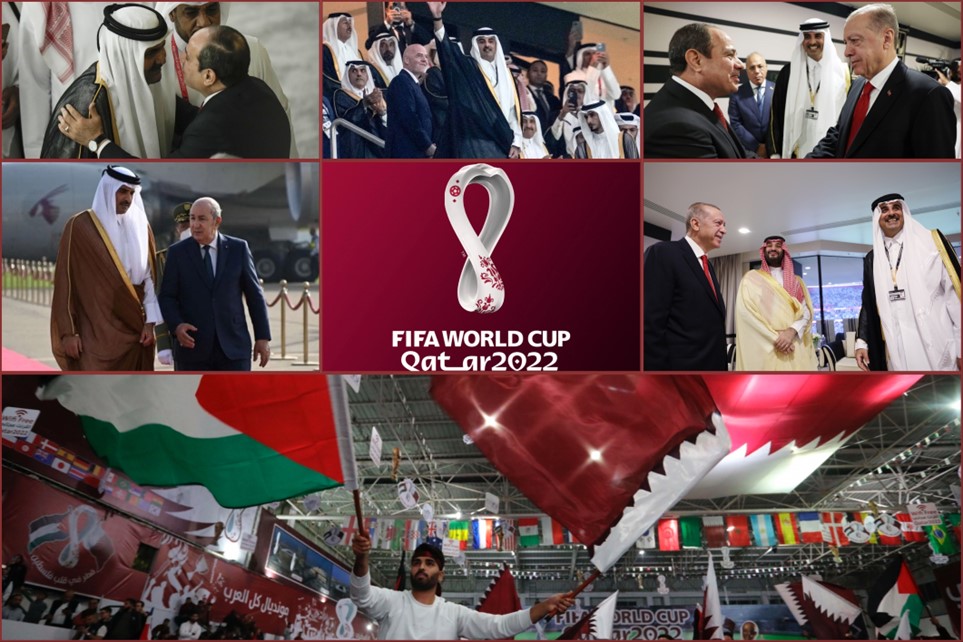A week ago, on 20 November the 2022 FIFA Football World Cup started in Qatar. This is only the second contest to be held in Asia and the first ever to be held in the Middle East. Since Qatar, a tiny nation in size and population, but great in financial possibilities and sport diplomacy, was awarded the chance to host this event in 2010 there has been heavy criticism about the decision. But so far all is going as smoothly as one can dream for.
This is a huge symbolic milestone and already a massive success. Not only for Qatar but for the whole Middle East. Despite the occasional bids from much bigger countries, never has any Arab nation before ever really gotten close to hosting such a global event. Possibly only second to the Olympics. And thus, this championship is not only crucially important for Qatar but to the whole Arab world. And in many regards to the whole region, and the whole Islamic world.
Not everything was so promising in the last couple of years. Months after Qatar was selected to host this year’s event the infamous “Arab Spring” swept through the region, causing years of turmoil in many countries that still echoes today. And Qatar had a significant part in this. Criticism around the world was harsh against Qatar, if it could ever manage such an event properly, how it treats its workers, what conditions would await the fans, and even two years ago many of its neighbors were blockading the small Persian Gulf country. Which still has a questionable reputation in its very region.
Nonetheless, despite all negative foreshadowing, Qatar managed to prove its critics wrong. And as part of its long pursued sport diplomacy efforts, greatly improved its image and united the world.
But what does this World Cup tournament really mean for Qatar, and for the Arab world?
The wave of controversies
Ever since Qatar won the 2022 FIFA World Cup there has been amazement and criticism against the decision. Which gradually transformed from technical and legal concerns to more political and ideological ones, later on, to gain a distinctly provocative angle in the last few months.
The first set of questions rose immediately in 2010, for which the decision was labeled by the FIFA committee itself as a “high-risk” operation. These technical matters boiled down to two major concerns. For one, the Persian Gulf has an extremely hot a humid climate in the summer, making it very unlikely to be able to host such an event without a huge strain on players and fans alike. Secondly, in 2010 only one stadium was ready out of the eight that hosted the tournament, making it questionable if Qatar could properly build them in time, with all the additional facilities needed. Having in mind that the Arab world is not specifically known for its precision.
The first problem was solved by pushing the program back from the usual summer event to early winter between mid-November and mid-December. Only to end shortly before Christmas. As for the infrastructure, Qatar really had to speed up construction to be ready in time. Which managed to do well in the schedule. So much so that a year ago it had its grand stress test, when Qatar hosted the 11th Arab Football Cup in December 2021. Most of the facilities were already these to try, though in scale it was a much smaller event than the one Doha hosts these days.
In fact, Qatar took the challenge so seriously that eventually, it became one of the best-organized global sports events. In only three years Qatar has built three brand new and modern metro lines, connecting all stadiums and fan villages with each other, providing fast public transport. Which in most cases is even free for those arriving in Qatar with a World Cup visa.
So, despite the “high risks”, Doha managed to fulfill its promises. Much beyond the expeditions and the occasional criticism.
The other set of controversies surrounded corruption allegations and the poor treatment of migrant workers in Qatar. There were doubts from the beginning that the famously rich Persian Gulf monarchy would have channeled bribes to delegates of smaller associations to practically buy their votes. Yet nothing specifically major came out of it until 2014 when the first major inspections started. In the following investigations much of the claims against Qatar – and Russia for its 2018 tournament hosting – fell flat without anything being proven, until a much bigger scandal broke in 2015, the infamous FIFA corruption case launched by the FBI. The subsequent case highlighted a massive network of corruption within the organization itself, a suspicious unofficial “policy” which eventually swept away long-time FIFA President Sepp Blatter and UEFA president Michael Platini in December 2015, both being found guilty – along with a large number of FIFA officials – for unacceptable practices. And while a large number of people were found guilty and both Russia and Qatar were mentioned initially as sources of bribes, nothing was proven against the two host nations. And strangely enough, Russia is seldom remembered as ever being part of this controversy. While it has been established that FIFA’s inner circles had very questionable practices, the whole case showed that even if there were bribes, the case is not at all about one rich nation bribing a clear and trusted organization for illegal practices. Much rather the other way around seemed likely that bribes would have been “part of the usual process”.
And since the case was much bigger than being just about Qatar, it all seemed eventually more prudent to just let the matter rest and hope for a successful tournament, which can sweep the whole story under the rug. Overall, even if there were major bribes – which might be true -, that is not something Qatar would have been the only candidate to do. And for this small state, hosting this event really worts all investments.
With this matter subsiding the blame shifted towards the poor conditions of the migrant workers building the World Cup’s facilities. In 2021 The Guardian reported that around 6500 migrant workers lost their lives during the construction due to extreme workloads. A number that is regularly repeated since then. This was exacerbated by the fact that Qatari authorities were not exactly forthcoming about the details of these cases, though most of these were listed to have happened for sudden, but natural reasons.
It is true that Qatar, a rich nation of fewer than 3 million people out of which only around 300 thousand are Qataris themselves relies heavily on migrant workers in all fields. However, that is not a unique case in the region. Most GCC member states have similar practices, with indeed sometimes tragic conditions for the workers. These states mostly hold the position that even with these circumstances they provide a better life for these people giving them job opportunities and salaries way beyond what they would have earned in their own countries. And thus they can provide for their families. They also point out that such disparities can be seen in most developed countries, as South American workers in the USA, or third-world migrants in Western Europe, for example, have also significantly worse conditions than citizens, and labor rights are exercised in a much more “relaxed” sense than usual.
This might seem to be hypocritical and even cruel in many regards, but it is often disregarded that Western construction firms were, and in the other Gulf countries still are the main benefactor of these massive projects. And strangely, such criticism is seldom raised about the other states or projects, even though they are widely known.
It was only in the last few months before the 2022 World Cup started that a new wave of criticism was raised against Qatar, as how could this “conservative” country host such an event ideally uniting the world, while not having alcohol, or having practices against homosexuality? In these regards, Qatar rejected the criticism, and firmly defended the policy that it has its own culture and set of values. That while it welcomes the whole world and does not interfere with the values of others, it will not change its policies for the sake of one event. In the Middle Eastern context, it was actually very well received that Qatar did not make major concessions. And indeed, rejecting the over-politicized atmosphere around the main sports event was refreshing. Because Qatar did not want to simply host an event, but to give a sample of its own view of the world. It wanted to show itself, and the Arab world.
It is very noticeable that none of the criticism was unique to Qatar. Such questions could have been brought up before with South Africa (2010), Brazil (2014), and Russia (2018), and some were, but nowhere was this so virulent and relentless as with Qatar. Yet it is quite ironic that while much of the criticism was against the alcohol restrictions, or having such a global event in the middle of the famously unstable Middle East, Qatar in 2022 was in fact ranked as the safest country in the world, and largely due to the alcohol restrictions, there are no “street clashes” between fans ravaging whole city neighborhoods. Like it happened in many such events in the past.
Despite all the harsh and often ongoing criticism, Doha managed to prove its critics wrong so far. And holding on to its character gives a unique insight into the Middle East far from the usual perceptions.
Does it worth it for Doha?
Having seen how much effort such a small nation has put into the event and what infrastructure it constructed that it might not even necessarily need, the question is very logical: Why does it worth it for Qatar? Where is the catch?
Like most Gulf nations gaining full independence only in the second half of the twentieth century, Qatar has for long suffered from the dichotomy of huge revenues on the one hand, but a small population and being massively underdeveloped on the other. Such conditions in human history normally triggered massive corruption, unwise spending wasting opportunities, and squandering temporal wealth for luxury, weapons, and territorial ambitions, only to end up in bankruptcy. And when the era of upheaval is over, nothing would remain from the “good old days”. There were bitter warning signs for this, as once these states lived in unbelievable luxury, as before the “age of oil” this part of the world was the main source of the natural pearl, but also a lucrative trade hub between India and Europe. Yet not much is left from these glorious old days. There are occasional warning signs also from Saudi Arabia and Kuwait that unwise spending can massively backfire. The Gulf states also realized, especially by the Saudi example, that no matter how well they integrate into the global economic network and the Western political framework, they are still considered outsiders. The heavy and often oversized criticism against Qatar shows it well. So to use the opportunity well, to establish well-being for the next era, and build something lasting, they have to make themselves accepted. They have to stick out and modernize themselves. While Oman chose a unique path on this road, mainly the Emirates and Qatar – two bitter rivals – decided to find their own brands to “sell” their image to the world. And while the Emirates chose the luxury of Dubai and the grandiose real estate projects like the Palm Islands, Qatar chose education and sports.
Primary it was Emir Ḥamad ibn Halīfa (1995-2013), the retired previous ruler of the county, who had a distinct vision and passion for sports and started to invest massive sums into all its forms. The first step was in 1995 by establishing the Qatar Foundation, a massive state-sponsored non-profit research, and education organization. It invited professionals from all around the world to provide top-level education not only for Qataris but in a regional level. And in many fields, it has become a leading scientific hub. It helped to create the Qatar Academy with five branches by now, which helps Qataris to integrate into the Western world by providing an interconnected education framework. And it was the Academy that boosted sports on a massive level, while the state was pouring funds into the infrastructure and inviting all kinds of major events. Since 2004 Doha hosted 31 major Asian or world championships in various sports, which has already included the FIFA Club World Cup in both 2019 and 2020.
The point is, just like now, to invite the world to Qatar and give an example of its lifestyle. It familiarizes itself with the world but also shows itself as an excellent and quality host. It is one of the most successful examples of such “soft diplomacy”. And just like now, gradually holding bigger and more public events every year, it has access to “free” publicity. Thus showing that the Middle East and the Arab world is not necessarily problematic, but can be a reliable partner and cordial friend.
Because when this is done and bridges are built at various levels, business is done in a different way. Politics get a different angle.
Qatar also uses its seemingly inexhaustible financial reserves to finance its ideological and political agendas as well and has managed to turn into a diplomatic juggernaut in the region. Its ties to ideological groups like the Muslim Brotherhood and its influence in many regional states are well known, which can cause problems. But by showing itself to the world as a county of development, security, and openness the world manages to shape this image to a more sympathetic form. And in an age, when Qatar has a unique role in the global economy as one of the biggest natural gas providers when Russia is being sidelined, it is not a negligible matter what image this county has. It is a PR campaign on a grand scale. That is why it is imperative for Qatar to show itself in a positive light. And World Cup’s opening ceremony highlights this aim perfectly, blending the West with the Middle East, putting Doha into the middle of this juncture.
A perfect opportunity
One other major concern even two years ago about Qatar hosting the 2022 FIFA World Cup was that since 2017 it was under a practical blockade. In June 2017 Egypt, Saudi Arabia, Bahrain, and the Emirates cut all ties with Qatar and even threatened military intervention, forcing an ultimatum on Doha. Which if was to accept would have pushed it back to a second-grade player in the region. The blockade was so serious that for a time Qatar was practically cut off from the outer world, having only a narrow air and sea corridor towards Iran. If that blockade was to last, most fans would have had a huge difficulty reaching the tournament, and some nations would have boycotted it. It would have been a scandal. This problem was solved in January 2021 with reconciliation. Nonetheless, for a long the rivalry between the two biggest regional camps, the Saudi-Emirati-Egyptian block, and the Qatari-Turkish tandem went on, fueled by the underlying struggle between Abū Zabī and Doha.
In the last two years, the Qatari leadership skillfully tried to corner its rival by distancing it from its allies and building new networks of its own. While reconciling with Saudi Arabia and Egypt was not exactly easy, it largely depended on making Qatar’s main ally, Turkey an acceptable partner once again. And thus Doha smoothly pulled closer to Turkey’s partners in the region, like Algeria, and tried to arrange a reconciliation between Ankara, Riyadh, and Cairo.
And what better occasion is there for such a move than this World Cup? Qatari Emir Tamīm did not participate in the Arab League Summit in Algiers this November, because it was to criticize Turkey for its policies in the region. But he did visit Algiers at the same time to inaugurate a set of joint projects. Algeria, which in recent years has built cordial ties with Turkey, is a very important partner for Qatar now. Because apart from Russia, it is only Qatar and Algeria that can bring massive quantities of natural gas to Europe. And that is a huge leverage. Algeria needs funds, and technological and political support, while Doha has a distinct benefit to staying close to Algiers now.
And it was Algerian President ‘Abd al-Mağīd Tabbūn who was the first guest in Doha at the opening of the FIFA World Cup last Sunday.
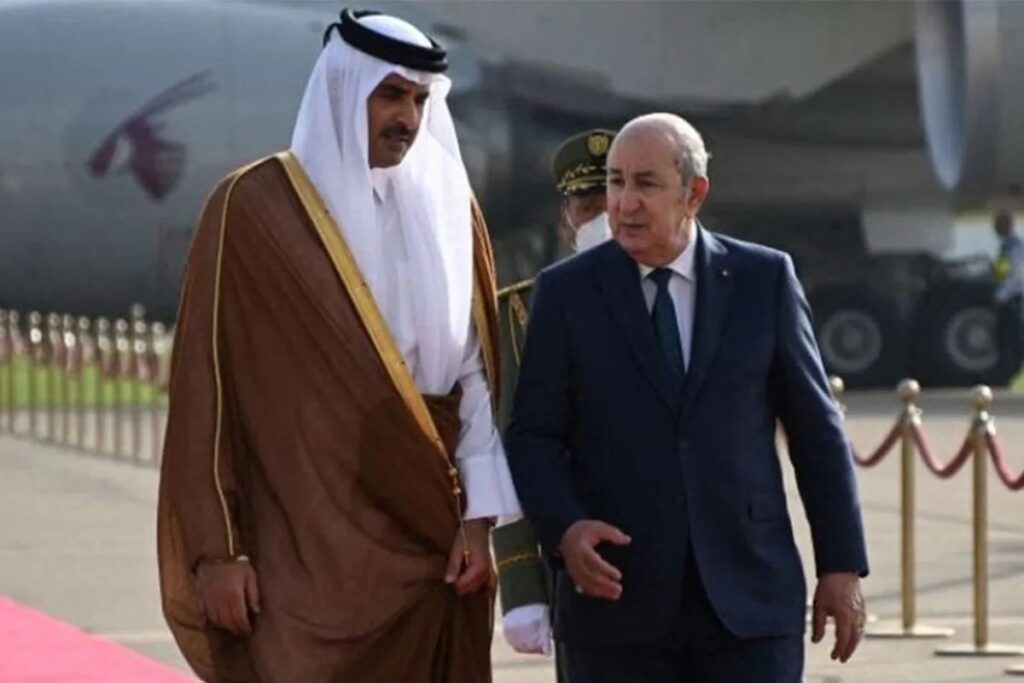
He was the first, but by far not the only major guest. Turkish President Erdoğan and Egyptian President as-Sīsī also attended, and both met in the presence of Emir Tamīm. And with one other partner present. Saudi Crown Prince Muḥammad ibn Salmān.
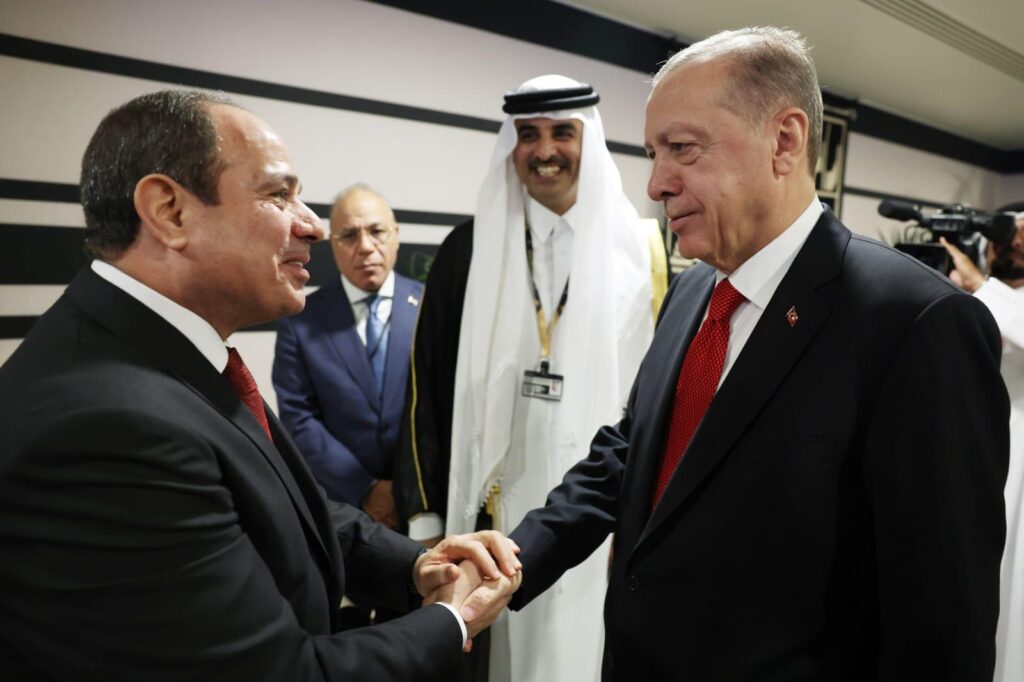
The opening ceremony was also attended in the VIP section of the Emir by Jordanian King ‘Abd Allah, the Kuwaiti Crown Prince, and a larger Omani delegation. There were only two parties missing. The leaders of the Emirates and Bahrain. It is not a coincidence. It is a diplomatic power play in its purest form.
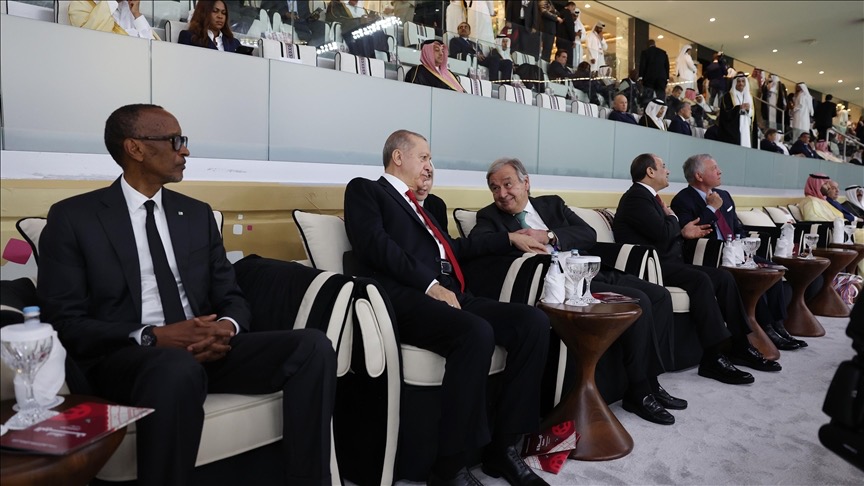
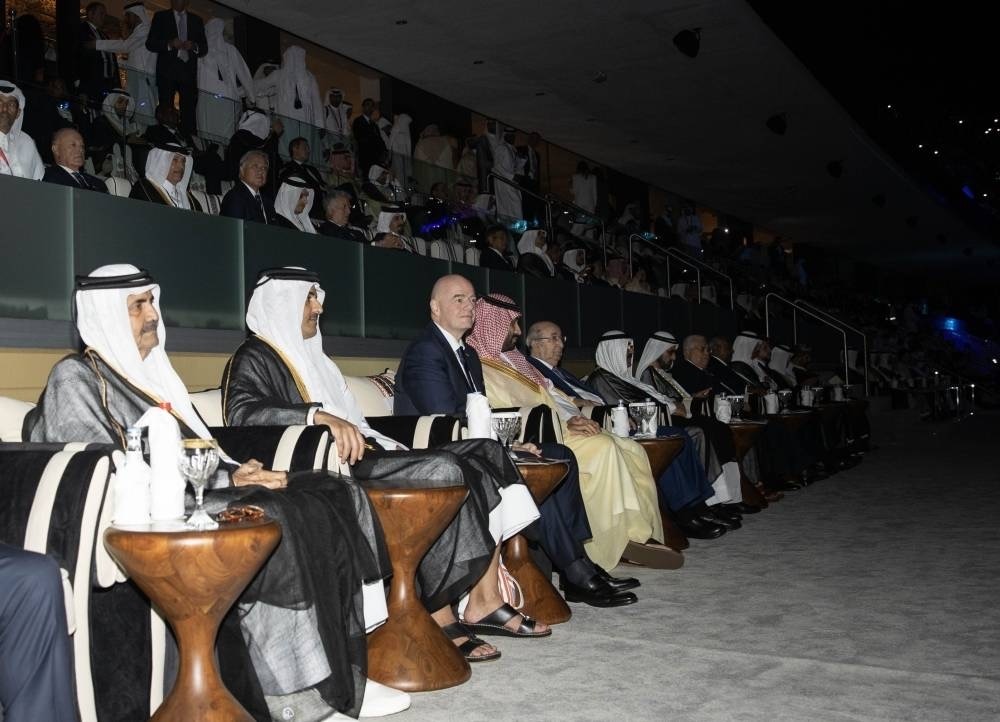
It matters much more
What Qatar does today is essentially a selfish PR campaign to boost its image, while conducting business lucrative deals and fueling its huge political-ideological agenda. That is why the performance of the home team is actually unimportant. But it has a benefit for the region. Western audiences mainly encounter the image of the Middle East as being unsafe, a hotbed of terrorism, underdeveloped and backward, and in general hostile to the outside world.
And that is exactly why this World Cup is such an uplifting moment for the whole Arab world. Because it shows the contrary and changes these negative views. For the benefit of all Arab and Islamic countries. And the catch is here.
After the Arab Spring, the image of Qatar became highly controversial, especially in the Arab world. After the devastating results of this chain of catastrophic events, Doha tarnished its image in the region, while the rival Emirates managed to take advantage of that. The Gulf crisis between 2017 and 2021 was showing this trend perfectly.
But now it is not the Emirates that brings the world to the Middle East and fills the Arab world with pride. It is Qatar.

